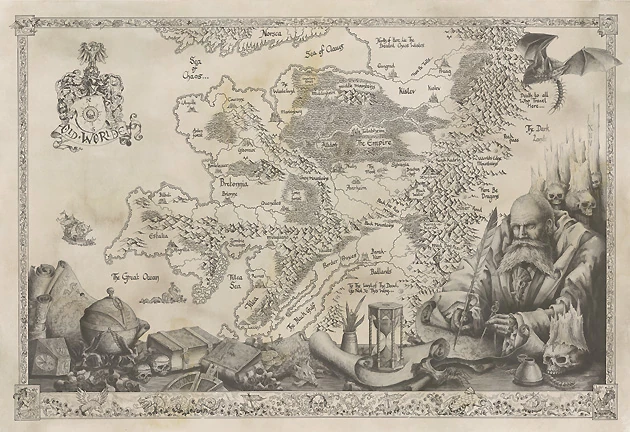Let’s take a look at the game structure and turn sequence for Warhammer: The Old World and how it stacks up to previous editions.
Welcome to the first of several articles in which I explore the mist-shrouded origins of the rules for Warhammer: The Old World, as related to us through the Old World Almanack posts on the Warhammer Community website. The first Old World Almanack proclaimed “a new game, designed from the ground up” while in the same breath stating “that’s not to say that it hasn’t taken plenty of inspiration from what came before it.” This got me thinking about the evolution of Warhammer Fantasy and whether the Old World will truly feel like a new game or an old classic.
To begin with, let’s take a look at the game structure as outlined in that first Almanack article. Games are broken down into rounds, and within a round each player will take a turn. This is classic IGoUGo stuff, with us from the very beginning of gaming. A player’s turn is broken down into four phases, each with four sub-phases, which we know look like this:
- Player Turn
- Strategy Phase
- Start of Turn
- Command
- Conjuration
- Rally Fleeing Troops
- Movement Phase
- Declare Charges
- Charge Moves
- Compulsory Moves
- Remaining Moves
- Shooting Phase
- Declare Targets
- Roll To Hit
- Roll To Wound
- Remove Casualties
- Combat Phase
- Choose & Fight
- Calculate Result
- Break Test
- Pursuit
- Strategy Phase
We will leave off discussing the sub-phases in detail for the articles focused on their parent phases, but where does this overall structure come from? You will be entirely unsurprised to hear that the very first edition of Warhammer set the groundwork for this structure and used. Warhammer: The Mass Combat Fantasy Role-Playing Game broke down the player tun into six phases: Movement, Shooting, Combat, Second Movement(!), Magic and Rout. There were no distinct sub phases, but already certain immutable facts of Warhammer were carved in stone: Movement, Shooting and Combat phases all happen in this order. Sometimes a phase will sneak in between them, but they will never switch spots with one another.
The Second Movement and Rout phases will morph into the Reserves and Rally phases over the next few editions, until 4th edition, when Rick Priestley finally folds them both into the movement phase at the beginning of the turn. 5th Edition introduces the Start of the Turn Phase, the predecessor to The Old World’s Strategy Phase, which will stay with Warhammer up until 8th edition, when it gets demoted to a sub-phase and put at the beginning of the movement phase.
So once we get to 5th Edition we have something very much like The Old World’s turn structure, with one glaring difference: The Magic Phase. This cheeky phase moved around more than any other over the editions. It came after Combat for the first five editions, making it second-to-last for the first three and dead last for 4th and 5th. Then in 6th Edition it jumped ahead of Combat and Shooting, where it stayed through 8th. The Old World has done something very sensible and removed this phase entirely; spells and magical powers are now cast during relevant phases.
And there we have the concise history of the game structure and phases of the turn in Warhammer. Next time we will take a look at the Strategy Phase and its sub-phases. Until then, happy hobbying!
And remember, Frontline Gaming sells gaming products at a discount, every day in their webcart!




